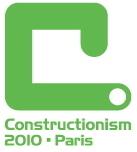

Film Collection > Plenary Talks
Bringing “No Ceiling” to Scratch: Can One Language Serve Kids and Computer Scientists? Harvey, B. and Mönig, J. |
(click here to watch the video) | |
Scratch (http://scratch.mit.edu) is a computer programming language for children, with a graphical drag-and-drop user interface. It is a descendent of Logo, developed at the MIT Media Lab. A small but growing trend among universities is to develop computer science courses for non-majors using Scratch as the programming environment, because it isn’t threatening―the same reason it works for kids. Also, the visible use of multiple threads in Scratch provide a simple introduction to parallelism. One such course was piloted this year at the University of California, Berkeley: “The Beauty and Joy of Computing.” |
 |
Hosted by Educational Technology Lab @ National and Kapodistrian University of Athens |